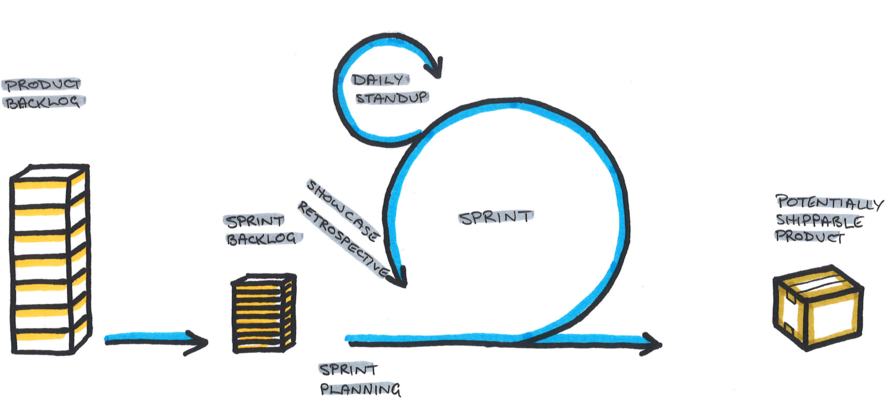2.3. Ways of working
The team will use Agile techniques and practices, ensuring collaboration, planning and feedback are iteratively integrated throughout the weeks of Discovery.

2.3.1. Sprints
For Discovery, the team will operate on a 1 week cadence, a time boxed period known as sprints. Throughout the sprint the team will work through the following Agile ceremonies.
2.3.2. Daily stand-ups
At the beginning of each day the team will gather for a brief 15 minute session, known as a daily stand-up. The standup will provide opportunity for the team to regroup on their focus and goal for the week, progress made and any constraints/blockers. Typically the team will use a wall/board and cards/stickies to visualise their work, ensuring the stand-up is focussed to the work inflight.
2.3.3. Sprint planning
At the beginning of each sprint the team will conduct a 1 hour planning session, allowing them to determine the plan for the upcoming week. During the session the team will capture their overarching goal for the sprint and prioritised tasks required to achieve this goal. The Product Owner plays a key role in leading the prioritisation. All tasks are visualised on their team wall/board.
Considerations when planning include task sizing (e.g. S, M, L) and team capacity (allowing for preplanned leave, ramp up time etc). At the completion of sprint planning the team should have a high level of confidence of their ability to achieve their goal.
2.3.4. Retrospectives
Continuous improvement is a key principle of the Agile way of working, ensuring the team is regularly inspecting and adapting. Held at the end of the sprint, the retrospective is a collaborative workshop in which team members capture what worked well throughout the sprint, what worked not so well and improvements to be made in the upcoming sprint.
2.3.5. Showcase
Transparency and feedback are critical throughout Discovery. At the end of each sprint the team will regroup with stakeholders and other interested parties, showcasing the work completed throughout the sprint. The team will discuss their goal captured during sprint planning, progress against the goal and any impediments which held them up in achieving the goal.
The showcase is an opportunity to celebrate the achievements of the team, whilst capturing feedback for consideration for the upcoming sprint.
By sharing regular updates to stakeholders at the showcase, you can reduce the amount of ad-hoc drop-ins to the team during the sprint.
2.3.6. Visual Management
Visually representing the team’s work encourages close collaboration and transparency throughout the sprints.
Techniques to represent the work include:
- what are we working on: tasks captured on stickies/cards
- who is working on what: team member avatars against work in progress
- how is the work tracking: tasks represented in their swimming lane/status, e.g. backlog, in progress, in review
- help needed: tasks which are blocked and need assistance from outside of the team
Depending on the team, you may also want to track team tasks using an online tool like JIRA or Trello.